Adonis
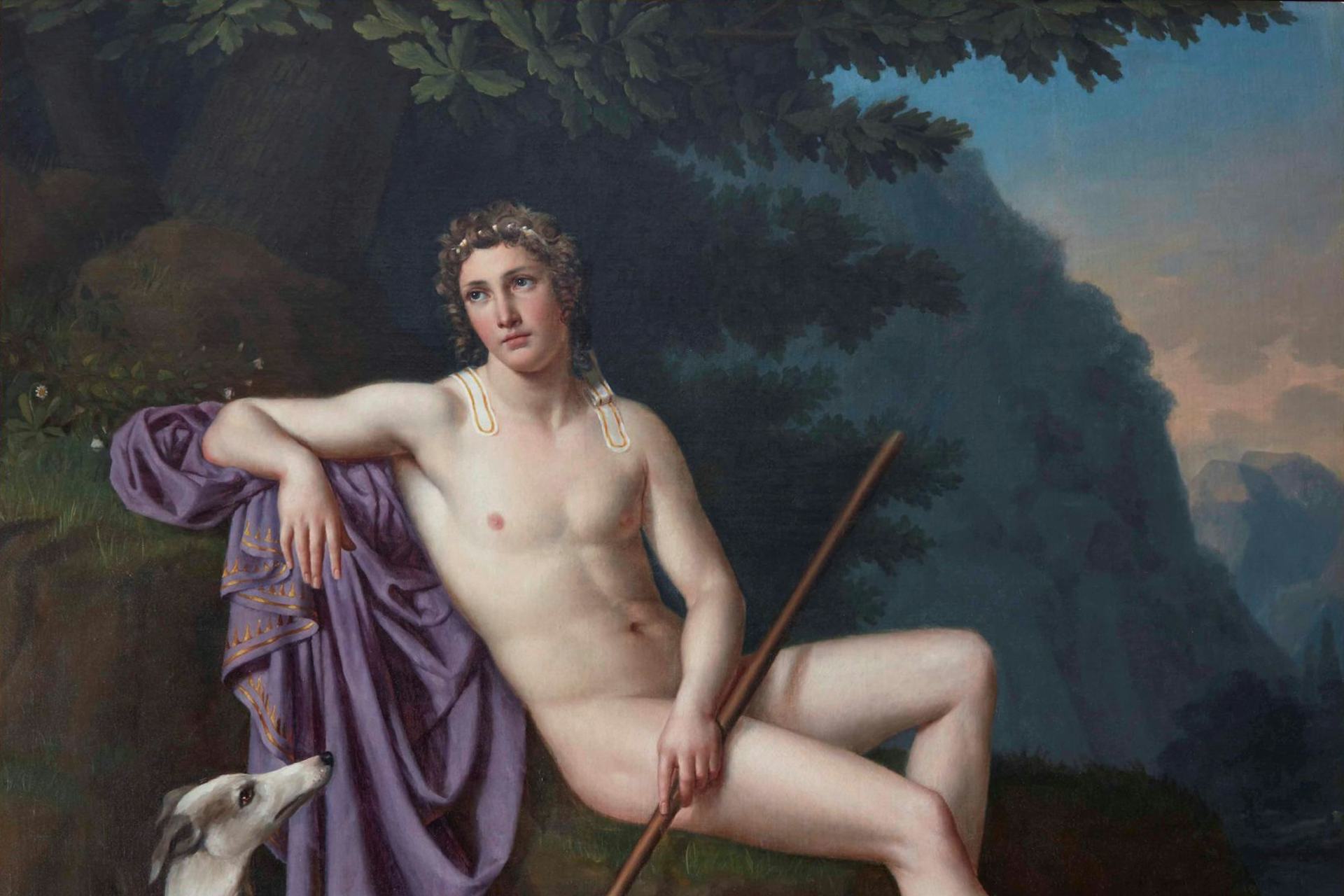
Adonis by Sophie Rude (19th century).
Wikimedia CommonsPublic DomainOverview
Adonis, son of the Eastern king Cinyras and his daughter Myrrha, was an exceptionally handsome young man. He was so handsome, in fact, that the goddesses Aphrodite and Persephone competed for his love. Though they were ultimately forced to share the young man, Adonis favored Aphrodite and was best known as her lover.
Adonis was also an accomplished hunter. One day, while out hunting, he was slain by a boar (sometimes said to have been the god Ares in disguise, another one of Aphrodite’s lovers and thus Adonis’ rival). Aphrodite greatly mourned Adonis’ death; she commemorated him by creating the anemone from his blood and instituting lavish festivals in his honor.
Etymology
The name “Adonis” (Greek Ἄδωνις, translit. Adōnis) comes from the Semitic word ʼadōn, meaning “lord.”[1] This etymology reflects the mythical Adonis’ connection with the Middle East.
Pronunciation
English
Greek
Adonis Ἄδωνις (translit. Adōnis) Phonetic
IPA
[uh-DON-is, uh-DOH-nis] /əˈdɒn ɪs, əˈdoʊ nɪs/
Attributes and Iconography
Adonis was most famous for his physical beauty. He was so handsome, in fact, that he won the love of Aphrodite, the goddess of love and sex.
Adonis was also connected to fertility and vegetation, and despite his mortal origins, he was widely worshipped as a god by the ancient Greeks. Because his mother Myrrha was the original myrrh tree, Adonis was strongly associated with myrrh, as well as anemone, myrtle, and the rose.
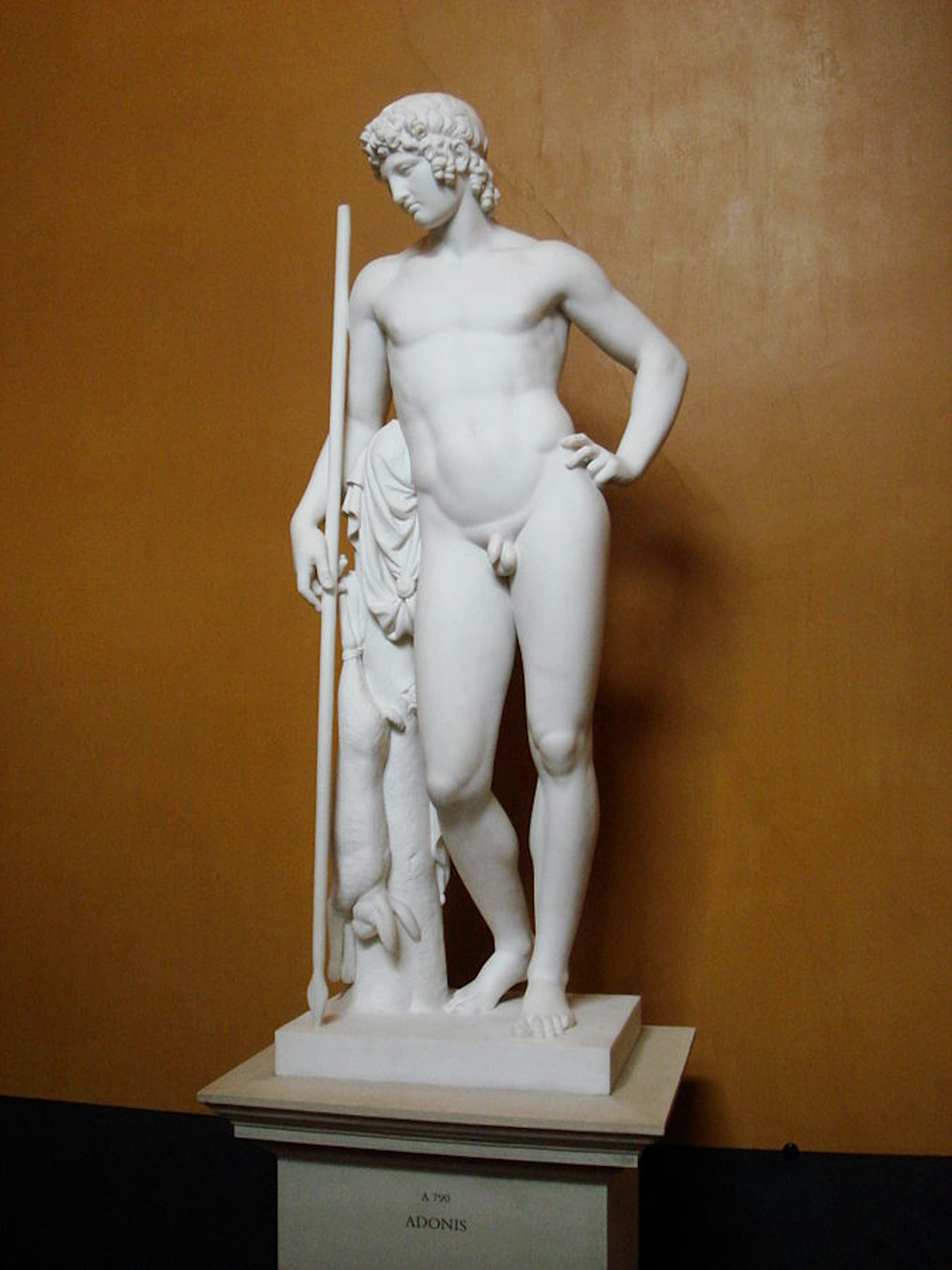
Adonis by Bertel Thorvaldsen (19th century). Thorvaldsen Museum, Copenhagen, Denmark.
Stefano BologniniCC BY-SA 3.0In ancient art, Adonis was depicted as a handsome young man, often in the company of Aphrodite or other female figures.[2]
Family
In what appears to have been the common tradition, Adonis was the product of an incestuous affair between Cinyras, an Eastern king, and his daughter, named either Myrrha or Smyrna.[3] But in other traditions, Adonis’ parents are variously called Phoenix and Alphesiboena,[4] Theias and Smyrna,[5] or Cinyras and Metharme.[6]
Family Tree
Parents
Fathers
Mothers
- Cinyras
- Theias
- Agenor/Phoenix
- Alphesiboena
- Metharme
- Myrrha
- Smyrna
Siblings
Brother
Sisters
- Oxyporus
- Braesia
- Laogore
- Orsedice
Consorts
Lovers
Children
Daughter
Sons
- Beroe
- Golgos
- Priapus
Mythology
Origins
According to most authorities, the myth of Adonis began when the princess Myrrha (sometimes called Smyrna) offended the goddess Aphrodite. To punish the girl, Aphrodite made her fall in love with her own father, King Cinyras.
Myrrha, employing the help of a slave, was able to sneak into her father’s bed and sleep with him without him realizing who she was. But when Cinyras discovered what his daughter had done, he was so furious that he intended to kill her. Myrrha fled. Fearing that she would be caught, she begged the gods to make her invisible, and they obliged by transforming her into a tree—the first myrrh tree.
But Myrrha had become pregnant by her father. Nine months passed, and Myrrha—now a tree—went into labor:
The guilt-begotten child had growth while wood
was growing, and endeavored now to find
a way of safe birth. The tree-trunk was swelling
and tightened against Myrrha, who, unable
to express her torture, could not call upon
Lucina in the usual words of travail.
But then just like a woman in great pain,
the tree bends down and, while it groans, bedews
itself with falling tears. Lucina stood
in pity near the groaning branches, laid
her hands on them, and uttered charms to aid
the hindered birth. The tree cracked open then,
the bark was rent asunder, and it gave forth
its living weight, a wailing baby-boy.
The Naiads laid him on soft leaves, and they
anointed him with his own mother’s tears.
And so Adonis was born.[16]
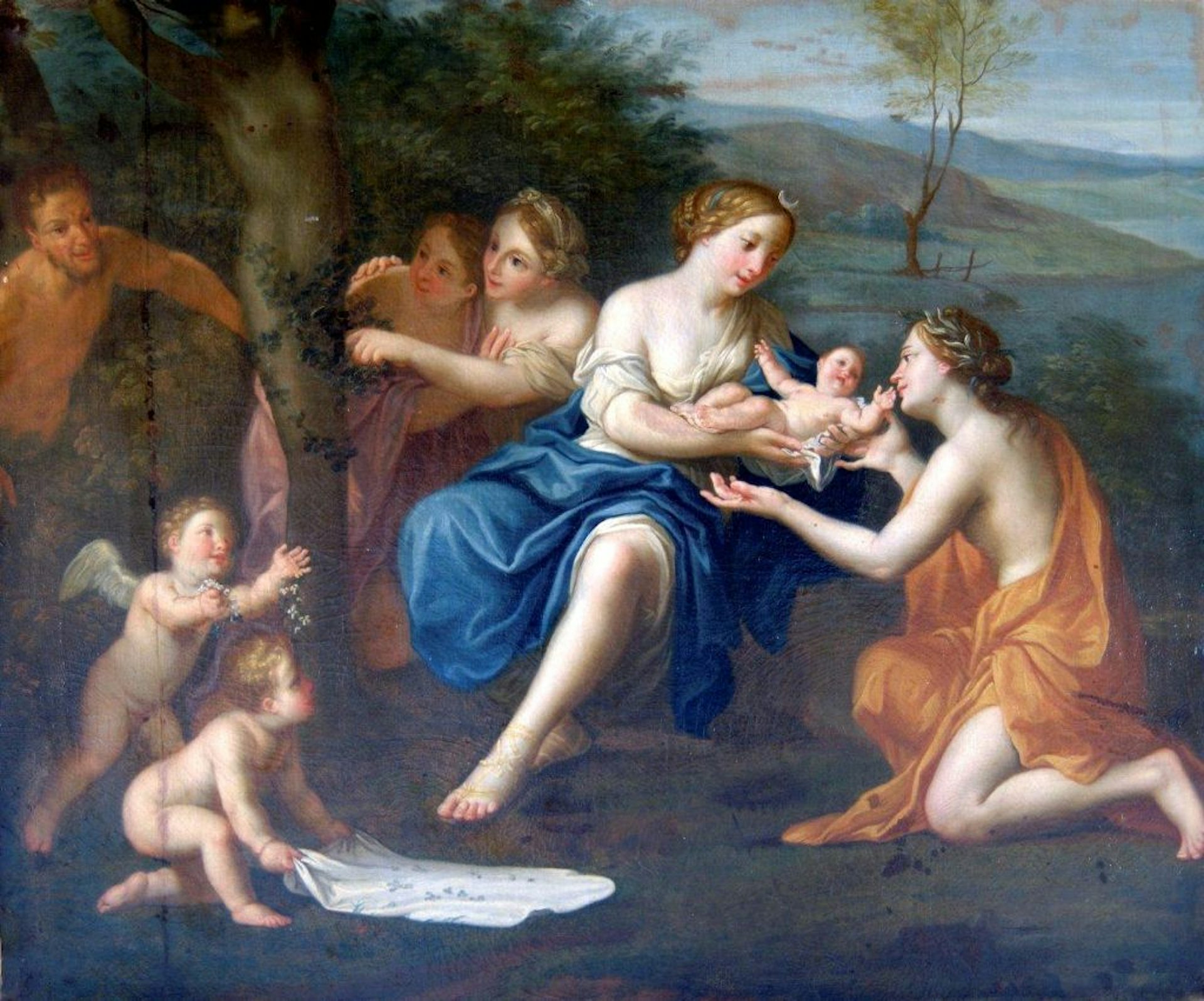
The Birth of Adonis, attributed to Marco Antonio Franceschini (1677–1678). Narbonne Museums, Narbonne, France.
Wikimedia CommonsPublic DomainThe newborn was soon discovered by Aphrodite, who gave him to Persephone for safekeeping. But when Persephone saw how beautiful Adonis was, she refused to return him. The goddesses eventually asked Zeus to judge their case; he ruled that Adonis would spend part of the year with Aphrodite and another part with Persephone (depending on the version, Adonis either spent half the year with each goddess or one-third of the year with each goddess, with another third to do with as he pleased).[17]
Death
Adonis grew into a handsome young man—so handsome that Aphrodite fell in love with him (as did Persephone, in some traditions). For a time, Adonis enjoyed the company of his divine lover in perfect bliss. But one day, while out hunting, Adonis was gored and killed by a wild boar.
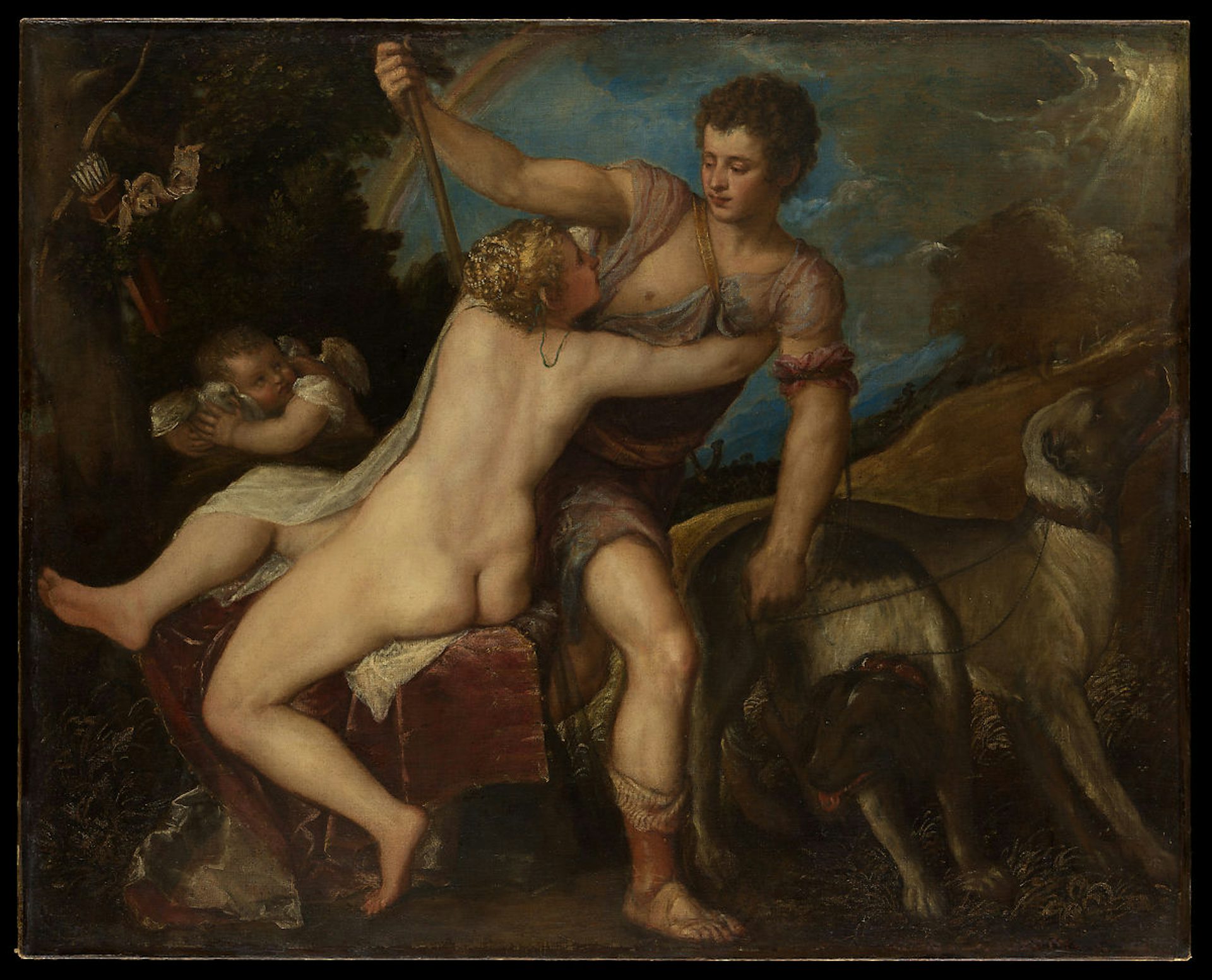
Venus and Adonis by Titian (1550s).
Metropolitan Museum of ArtPublic DomainSome sources claim that the boar that killed Adonis was sent by a god, though the precise identity of that god varies: in some traditions, the boar was really Ares, another lover of Aphrodite who was jealous of Adonis;[18] according to others, the boar was Apollo, who wished to punish Aphrodite for blinding his son Erymanthus;[19] in a third version, the boar was sent by Artemis, who wished to kill Aphrodite’s lover as revenge for Aphrodite’s role in the killing of her beloved Hippolytus.[20]
Aphrodite was devastated when she found Adonis wounded and bleeding to death. The scene was poignantly captured by Bion of Smyrna, a poet of the first century BCE:
The beauteous Adonis lieth low in the hills, his thigh pierced with the tusk, the white with the white, and Cypris is sore vexed at the gentle passing of his breath; for the red blood drips down his snow-white flesh, and the eyes beneath his brow wax dim; the rose departs from his lip, and the kiss that Cypris shall never have so again, that kiss dies upon it and is gone. Cypris is fain enough now of the kiss of the dead; but Adonis, he knows not that she hath kissed him.[21]
As Aphrodite mourned her dead lover, she created the anemone from his blood. She also honored him with a festival to commemorate his death.
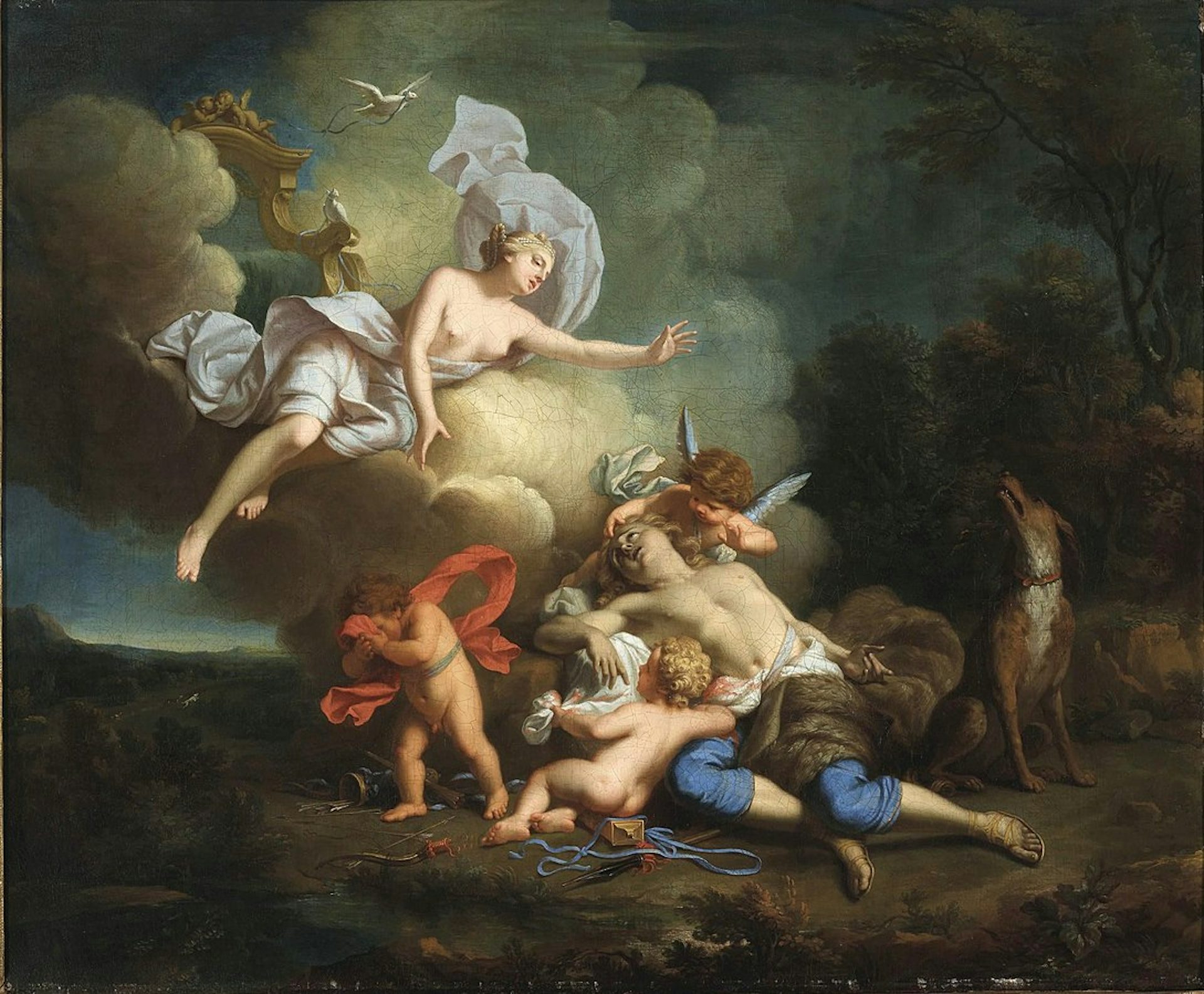
The Death of Adonis by Jean-Baptiste Nattier (1718).
Wikimedia CommonsPublic DomainIn some traditions, however, Aphrodite was able to once again strike a bargain with Persephone, the queen of the Underworld and her old rival for Adonis. This time, Adonis would spend part of each year among the other dead in the Underworld and the other part with Aphrodite in the world of the living.[22]
Other Myths, Other Lovers
The handsome Adonis was often said to have had other lovers in addition to Aphrodite, most of them divine. Some said that he was the homosexual lover of the god Apollo and the hero Heracles, while others said that he was carried off by Dionysus.
In another, rather idiosyncratic version of the Adonis myth—preserved in Servius’ commentary on Virgil’s Eclogues—Adonis’ death came about because of his unwitting involvement with the virginal Erinoma. Erinoma’s unwavering chastity earned her the love of the virgin goddesses Athena and Artemis—and the hatred of the sensual Aphrodite. Aphrodite hoped to tempt Erinoma and destroy her chastity, and so she caused first Zeus and later Adonis to fall in love with her.
Yet neither of these famous seducers was able to win the girl’s affections. Eventually, the frustrated Adonis raped Erinoma. Artemis pitied the girl and transformed her into a hen. Meanwhile, Zeus discovered that Adonis had violated his love interest and killed him with a lightning bolt.
Nobody was happy at this point: Athena and Artemis regretted their role in what happened to Erinoma, Zeus felt cuckolded, and Aphrodite was mourning Adonis. Eventually, a semi-satisfactory (if still perverse) resolution was reached: Adonis was restored to life, Erinoma was restored to her human form, and the two were allowed to live together as husband and wife. In the end, they had a child named Taleus.[23]
Worship
Festivals and/or Holidays
Festivals of Adonis—typically called “Adonia”—were common throughout the Greek world.In many cities, including Athens, Argos, and Alexandria, the Adonia was celebrated annually. The most distinctive aspect of the festival involved planting “Gardens of Adonis.” Women would plant various grain and vegetable seeds in baskets or pots; they then placed these baskets in the blazing sun so that they sprouted, withered, and died. Once the seeds had died, the women cast their Gardens of Adonis into a body of water, all the while mourning the death of Adonis.[26]
Some festivals of Adonis were supposedly more outlandish. In what may or may not have been a work of satire, Lucian described the Adonia celebrated in the Phoenician city of Byblos, claiming that it involved strange mystery rites, head-shaving, and ritual prostitution.[27]
Temples
There were a handful of temples, shrines, and sanctuaries dedicated to Adonis (or Adonis and Aphrodite). Pausanias, the second-century CE travel writer, describes such temples at Argos[28] and the Cypriote city of Amathus.[29] Modern archaeologists have also unearthed temples of Adonis in Syria and Lebanon.
Pop Culture
Adonis has not featured prominently in modern adaptations of Greek mythology. But his name (and more specifically, his famous good looks) is still sometimes evoked in modern pop culture. For example, the “Adonis Belt” refers to the V-shaped muscle running from the hip bones to the pelvis: having a visible Adonis Belt is widely cited as a feature of peak physical perfection, especially in men.
The handsome Adonis has also enjoyed a long history in the visual arts and has been given new life by such painters as Titian, Peter Paul Rubens, and Robert Grant.